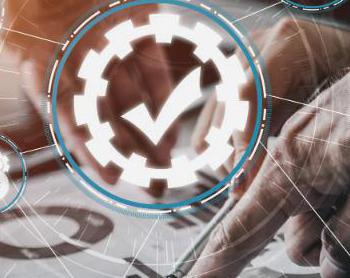Best Practices for Conducting System Isolation Tests

18-10-22 |
by John, Junior QA
System isolation tests are an important part of any software development process. These tests ensure that changes to the system do not have unintended consequences and that the system remains secure and stable. As such, it is essential that they are conducted in a professional and thorough manner.
Here are some best practices for conducting system isolation tests:
- Use a Dedicated Test Environment: Set up a dedicated test environment with a copy of the production system that can be used to test the changes without affecting the production environment. This will reduce the risk of causing problems in the production environment.
- Test Early and Often: Ensure that system isolation tests are conducted early and often during the development process to identify and address any issues before they become major problems.
- Document Test Results: Develop a comprehensive test plan and document the results of each test. This will provide a record of what tests were conducted and how they were conducted.
- Use Automated Testing Tools: Automated testing tools can be used to quickly and efficiently repeat tests and to identify potential issues with the system.
- Monitor System Performance: Monitor the system performance during testing to ensure that it is running as expected. This will help to detect any unexpected errors or performance issues.
By following these best practices, organizations can ensure that system isolation tests are conducted in a professional and thorough manner. This will help to ensure that changes to the system are secure and stable, and that any potential issues are identified and addressed before they become major problems.
Common Challenges in System Isolation Testing
System isolation testing is an important part of ensuring the quality of any system. It helps to identify any potential vulnerabilities or problems with the system, allowing for quick and effective bug fixes. However, conducting system isolation tests can present some common challenges.
One challenge is replicating a real-world environment. It's difficult to accurately simulate the exact environment that the system would be used in, which can lead to an incomplete test. To combat this challenge, it's important to create an environment that closely matches the target system. This can include using the same hardware and software components as the system being tested, as well as establishing similar networks, firewalls, and other security measures.
Another challenge is verifying the accuracy of the results. System isolation tests may produce a lot of data and it can be difficult to ensure that all of the results are accurate. To ensure accuracy, it's important to keep detailed records of the tests and analyze any discrepancies. Additionally, conducting multiple tests on different parts of the system can help to verify the results.
Finally, isolating the system from external influences can be difficult. It's important to ensure that any external influences do not interfere with the test, as this can skew the results. To combat this challenge, it's important to clearly define the boundaries of the test and make sure that any external influences are isolated from the system.
By understanding the common challenges in system isolation testing, organizations can take steps to overcome them and ensure that their tests are as accurate and comprehensive as possible. Taking the time to simulate real-world conditions, verify results, and isolate external influences will go a long way in ensuring the quality and reliability of any system.
How to Automate System Isolation Tests
Automating system isolation tests can help organizations ensure that their systems are secure and functioning as expected. System isolation tests are designed to verify that a system is isolated from other systems, networks, and users, and that the system's data and processes are kept secure. Automating these tests can help organizations save time and money by streamlining the testing process and reducing the need for manual testing.
The first step in automating system isolation tests is to develop a testing strategy. This should include identifying what type of tests are necessary, the scope of the tests, and the expected results. Once the strategy is developed, organizations should create test scripts that will execute the tests in a consistent way. It is important to consider how these scripts will be executed, as well as the environment in which they will be run.
The next step is to establish a testing environment. This environment should provide the necessary isolation between systems, networks, and users. It should also provide a secure environment that prevents unauthorized access to data and processes. Additionally, organizations should ensure that they have the necessary tools and resources to execute their test scripts.
Organizations should also consider using automated testing tools to streamline the testing process. These tools can help automate system isolation tests by running test scripts, collecting data, and providing detailed reporting. These tools can also automate the process of verifying that systems are isolated from each other and that data and processes are kept secure.
Finally, organizations should consider using a continuous integration platform to automate system isolation tests. Continuous integration platforms provide a secure environment for executing tests and automating the process of collecting data and generating reports. This can help organizations save time and money by streamlining the testing process and ensuring that their systems remain secure.
By automating system isolation tests, organizations can ensure that their systems are secure and functioning as expected. Automating these tests can help organizations save time and money by streamlining the testing process and reducing the need for manual testing. By utilizing automated testing tools, a secure testing environment, and a continuous integration platform, organizations can ensure that their system isolation tests are successful and their systems remain secure.





